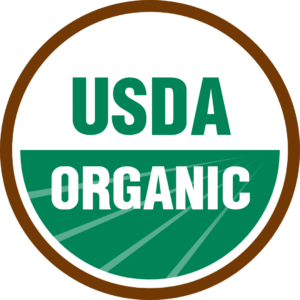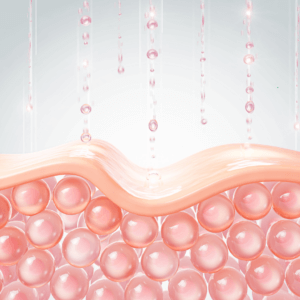Organic food and personal care products are more than just a trend—they are a movement toward better health and a healthier world.
However, with all the marketing jargon thrown around, what does “organic” really mean? Is it just a buzzword, or does it truly impact your well-being?
Many people believe organic is just another way for companies to charge more, while others swear by its benefits. The truth lies in the strict regulations and science-backed advantages behind the organic movement.
Let’s break down what “organic” really means, why it matters for your health, and how to ensure you are making truly organic choices.
What Does Organic Really Mean?
Organic refers to a method of farming and production that avoids synthetic pesticides, fertilizers, genetically modified organisms (GMOs), artificial preservatives, and harmful chemicals.
It is a legally defined term with strict standards set by organizations like the United States Department of Agriculture (USDA) and the European Union Organic Certification.
However, be careful of “greenwashing.” This is when, for example, companies use terms like organic on their labels to mislead people into believing that the entire product is organic when often it refers to just one or two ingredients (more on this below).
To defend against this widespread practice, what you want to look for are certified organic products, such as USDA Certified Organic in the US.
Organic Certification Requirements

To be USDA Certified Organic, a product must meet strict regulations that govern every stage of its production. Whether it is food or cosmetics, the following are key standards that organic certification requires:
- No synthetic pesticides, herbicides, or fertilizers – Organic farming prohibits the use of toxic chemicals like glyphosate, atrazine, and synthetic nitrogen-based fertilizers, which are commonly used in conventional farming.
- No GMOs (Genetically Modified Organisms) – Organic crops must be grown from non-GMO seeds and cannot be genetically engineered.
- No artificial preservatives, colors, or synthetic additives – Organic foods cannot contain artificial flavors, preservatives, or food dyes.
- Ethical treatment of animals – Organic meat, dairy, and eggs must come from animals raised without antibiotics or synthetic hormones and given access to outdoor environments that meet humane treatment standards.
- Sustainable farming practices – Organic farming promotes soil health, biodiversity, and conservation of natural resources.
The Difference Between Organic, Natural, and Non-GMO
It is common for people to confuse these terms, however, they mean very different things:
- Certified Organic – This term is regulated by law and requires certification to ensure that no synthetic chemicals, GMOs, or artificial ingredients are used.
- Natural – Completely unregulated. A product labeled “natural” can still contain pesticides, artificial preservatives, or GMOs.
- Non-GMO – This means a product does not contain genetically modified ingredients, however, it can still be grown with pesticides and synthetic chemicals.
The key takeaway? Not all “clean” claims are created equal, and understanding certification levels helps consumers avoid misleading marketing
Why It Is Important to Choose Certified Organic Food
 1. Reduces Exposure to Harmful Chemicals
1. Reduces Exposure to Harmful Chemicals
A key reason to choose organic food is to avoid synthetic pesticides and herbicides. Conventional crops are heavily sprayed with chemicals like glyphosate, a widely used herbicide classified by the World Health Organization as a “probable carcinogen.” According to the Environmental Working Group (EWG), over 70% of non-organic produce contains pesticide residues. Many of these chemicals do not just wash off—they accumulate in the body, affecting the liver, hormones, and gut microbiome.
2. More Nutrient-Dense and Healthier
Several studies suggest organic food contains higher levels of antioxidants, vitamins, and minerals compared to conventionally grown food. A major meta-analysis published in the British Journal of Nutrition found that organic crops had up to 69% more antioxidants than conventional ones. While organic doesn’t necessarily mean “superfood,” it often delivers more nutrition with fewer toxic residues.
3. Supports Gut Health & Reduces Toxic Load
Non-organic foods often contain synthetic additives, preservatives, and pesticides that disrupt the gut microbiome, the collection of beneficial bacteria crucial for digestion and immunity. Organic foods, free from synthetic chemicals, help reduce inflammation, support digestion, and strengthen immunity. Since your gut is often called your “second brain,” keeping it balanced with a pesticide-free, whole-food diet is key to long-term health.
4. Better for the Environment
Organic farming is not just good for your body—it is good for the planet. By avoiding synthetic fertilizers and pesticides, organic farming protects soil health, reduces water contamination, and promotes biodiversity. A study published in Nature Communications found that organic farming improves soil quality and retains 20% more carbon than conventional farming. This means choosing organic helps combat climate change while keeping toxins out of our ecosystems.
How to Shop Organic on a Budget
- Buy seasonal certified organic produce, as it is often cheaper.
- Purchase from local organic farmers’ markets, which often offer better prices than big retailers.
- Buy in bulk when possible, especially for pantry staples like organic grains, beans, and nuts.
Dirty Dozen & Clean Fifteen
The Environmental Working Group’s (EWG) annual reports on pesticide contamination in produce provide consumers with data-driven guidance on which foods carry the highest and lowest pesticide residues which helps shoppers prioritize organic purchases without overspending.
The Dirty Dozen: Always Buy Organic
- Strawberries
- Spinach
- Kale, collard, and mustard greens
- Peaches
- Pears
- Nectarines
- Apples
- Grapes
- Bell and hot peppers
- Cherries
- Blueberries
- Green beans
The Clean Fifteen: Lower Pesticide Risk and Generally Safer to Buy Non-organic
- Avocados
- Sweet corn
- Pineapples
- Onions
- Papayas
- Sweet peas (frozen)
- Asparagus
- Honeydew melon
- Kiwi
- Cabbage
- Mushrooms
- Mangoes
- Watermelon
- Sweet potatoes
- Carrots
Why It Is Important to Use Certified Organic Personal Care Products
 1. Skin Absorbs What You Apply
1. Skin Absorbs What You Apply
Your skin is your largest organ, and it absorbs much of what you apply to it. That means the parabens, phthalates, synthetic fragrances, and petroleum-based ingredients in conventional skincare products can end up in your bloodstream.
Research has found these chemicals in urine, breast milk, and even newborn umbilical cord blood, raising concerns about long-term exposure and cumulative toxicity.
Unlike food, personal care products do not go through the digestive system, meaning toxins can enter the body directly, without even being filtered out by the liver or kidneys!
2. Avoiding Endocrine Disruptors
Many conventional personal care products contain hormone-disrupting chemicals like parabens, phthalates, and synthetic preservatives. These substances mimic estrogen in the body, potentially leading to hormonal imbalances, infertility, early puberty, and increased cancer risk.
According to the Environmental Working Group (EWG), parabens have been detected in breast tumor biopsies, raising concerns about their link to breast cancer.
Certified organic cosmetics, such as skincare products, use plant-based, naturally derived ingredients that provide moisture and protection without synthetic additives that interfere with your hormones. Furthermore, to be certified organic, these plant ingredients must also be grown organically, without pesticides, herbicides, and other artificial chemicals.
 3. Less Risk of Irritation & Allergies
3. Less Risk of Irritation & Allergies
Many synthetic preservatives, artificial colors, and synthetic fragrances used in conventional skincare products are among the top causes of skin irritation, allergies, and contact dermatitis.
The fragrance industry, for example, is self-regulated, meaning companies are not required to disclose what is inside their scents—many of which contain phthalates and synthetic musk compounds that can trigger allergic reactions.
Certified organic skincare relies on botanical extracts, essential oils, and cold-pressed plant-based ingredients that are gentler on the skin and are less likely to cause irritation.
4. Environmental Benefits of Organic Skincare
Conventional beauty products contribute greatly to water pollution, plastic waste, and microplastic contamination. Many synthetic chemicals in mainstream personal care products wash down the drain and enter waterways, where they disrupt marine ecosystems and other wildlife.
For example, ingredients like triclosan (an antibacterial agent used in products such as conventional anti-aging creams) and oxybenzone (found in sunscreens) have been linked to coral reef destruction.
Certified organic means better for you and better for the environment!
5. How to Identify Truly Organic Skincare
With greenwashing (more on that in a minute) on the rise, it is important to look for trusted organic certifications rather than relying on misleading claims like “wild-crafted” or “clean beauty.” Some of the most reputable organic certifications include:
- USDA Certified Organic – The gold standard in the United States, requiring 95-100% organic ingredients and prohibiting synthetic additives.
- EcoCert Organic – Requires 95% natural ingredients, however, only 10% must be organic.
- NSF/ANSI 305 – Allows up to 30% non-organic ingredients yet restricts synthetic preservatives and petroleum-based chemicals.
- EWG Verified – Ensures products are free from high-risk chemicals however, it does not necessarily mean they are fully organic.
When shopping for personal care products, check ingredient lists carefully, avoiding parabens, phthalates, synthetic dyes, artificial fragrances, PEGs, and petroleum-derived chemicals. Opt for brands with clear, transparent labeling and third-party organic certifications to ensure purity and safety.
How to Spot Greenwashing & Avoid Misleading Labels
 Greenwashing is a growing fad when brands purposely mislead consumers by using vague or deceptive terms to appear healthier and more environmentally friendly than they really are.
Greenwashing is a growing fad when brands purposely mislead consumers by using vague or deceptive terms to appear healthier and more environmentally friendly than they really are.
Many companies take advantage of consumers’ desire for cleaner, safer products by using marketing tactics that create a false perception of sustainability and purity. Here is how to spot greenwashing and make truly informed choices:
1. Beware of Misleading Marketing Terms
- “Natural” does NOT mean organic. The term “natural” is completely unregulated and does not guarantee a product is free from pesticides, synthetic chemicals, or GMOs.
- “Eco-friendly” is vague. Without a certification or explanation, this phrase is often meaningless.
- “Clean beauty” has no legal definition. While many brands use this term to suggest they avoid harmful chemicals, there are no official regulations governing what is considered “clean.”
- “Made with Organic Ingredients” is not the same as USDA Certified Organic. A product can contain just one or a few organic ingredients and state things like this; however, it may still also be loaded with synthetic chemicals and preservatives.
2. How to Read Ingredient Lists
Marketing claims on the front of a package can be misleading, so first and foremost, check to ensure it is certified organic (it will show the USDA Certified Organic logo on the product label).
A secondary step is to check the actual ingredient list on the back.
- The first five ingredients often make up most of the product. If they are not designated as organic, that either means they are synthetic or were grown with pesticides and other artificial chemicals.
- While there are thousands of artificial chemicals you want to avoid in cosmetics, watch for very common hidden toxins like:
- Parabens (preservatives linked to hormone disruption)
- Phthalates (often hidden in “fragrance,” linked to endocrine disruption)
- PEGs (polyethylene glycols) (can contain carcinogenic contaminants)
- Artificial fragrances (can contain hundreds of undisclosed chemicals)
4. Common Greenwashing Tactics
- Fake eco-seals – Some brands invent their own “green” logos to appear organic.
- Green Packaging & Nature Imagery – Just because a product has a leafy design or “earthy” colors does not mean it is organic or chemical-free.
- “Free From” Labels – Just because something is “paraben-free” or “sulfate-free” does not mean it is free from other toxic ingredients.
- Loophole Labels – Brands highlight one “clean” aspect of their product (like “vegan” or “cruelty-free”) to distract from synthetic preservatives, artificial fragrances, or pesticide-laden ingredients.
- Again, watch closely for strict and independent certifications such as USDA Certified Organic in the US.
Conclusion
Making the switch to organic is not about perfection—it is about progress. Start small by choosing organic for the highest-risk foods and replacing cosmetic / personal care products you apply directly to your skin with USDA Organic options. Every step you take reduces toxic exposure and supports sustainable practices. The truth is, organic is not just about what you eat or put on your skin—it is about protecting your health, your future, and the planet.
Ultimate Organic Skincare Choice
 By now, you know the value of choosing organic skincare—most of what you put on your skin absorbs directly into your body, making it crucial to avoid synthetic chemicals, toxins, and artificial additives. However, with so many so-called “natural” and “clean” products out there, how can you be sure you are choosing a truly organic, effective skincare solution?
By now, you know the value of choosing organic skincare—most of what you put on your skin absorbs directly into your body, making it crucial to avoid synthetic chemicals, toxins, and artificial additives. However, with so many so-called “natural” and “clean” products out there, how can you be sure you are choosing a truly organic, effective skincare solution?
That is where Purity Woods’ Age-Defying Dream Cream comes in. Unlike most anti-aging creams on the market, this best-selling formula is fully USDA Certified Organic—ensuring every ingredient meets the strictest standards for purity and safety. No hidden toxins, no greenwashing—just nature’s most powerful botanicals to quickly eliminate the appearance of wrinkles, age spots, loose-looking and uneven skin, and more!
With Purity Woods’ #1 bestselling Age-Defying Dream Cream, you can be certain:
✅ The ingredients are grown organically, without synthetic pesticides & herbicides
✅ It is free from parabens & phthalates (linked to hormone disruption and premature aging)
✅ It is free from artificial fragrances & dyes (common causes of skin irritation and allergies)
✅ It is free from petroleum-based chemicals & silicones (which can clog pores and interfere with the skin’s natural renewal process)
✅ It is free from any artificial and toxic junk you do not want on your skin and therefore inside your body
Instead, the Age-Defying Dream Cream provides you with nature’s most powerful organic botanicals to boost elastin and collagen and deeply hydrate your skin—all without compromising your health.
For example, this includes:
🌿 Organic Red Maple Leaf Extract – One of the only known natural ingredients to boost elastin, which eliminates the appearance of wrinkles and sagging skin. This powerful botanical contains compounds that block elastase—the enzyme responsible for breaking down elastin.
🌊 Organic Astaxanthin Extract – This red algae-derived antioxidant is renowned for its ability to reverse the visible signs of aging from sun damage (photoaging) and protect against further UV-induced skin aging.
🍊 Organic Indian Gooseberry (Amla), Camu Camu & Mango Seed Butter – These superfoods are sky-high in vitamin C and other antioxidants that boost collagen, reducing the appearance of fine lines, wrinkles, and sagging skin, while also brightening and evening out skin tone.
💧 Organic Aloe Vera, Cacao Seed Butter & Sunflower Seed Oil – Deeply hydrate and nourish dry, aging skin, preventing moisture loss while delivering antioxidants that help maintain youthful, firm-looking skin.
🌼 Organic German Chamomile Extract – Rich in anti-inflammatory compounds, reduces the appearance of redness, soothes sensitive skin, and combats oxidative stress.
Do not settle for skincare products that claim to be “clean” yet still contain questionable ingredients.
With Purity Woods’ USDA Certified Organic Age-Defying Dream Cream, you can feel confident knowing you are feeding your skin the purest, most effective ingredients nature has to offer.
🌱 Try it today and see the difference USDA Certified Organic skincare can make! Click here to shop now (and be sure to see today’s special discounts plus FREE U.S. shipping!).



Great info. I will be passing this on to many others. Thank you!
Best,
eliot
I appreciate ALL your deep dive research and analysis! This information is very valuable and useful~ I’ve been using your skin care products for several years and I’m very pleased with the results, along with the peace of mind of knowing what I’m applying to my face is safe and effective!! I’ve recently started using some of your vitamins as well~
Hi, thank you for the kind words!
A helpful article.
This article really spells out the things to look for while purchasing food or makeup products.
Hi Brian,
I appreciate your passion in teaching us how to eat better for our health. Thanks for the guidance procided in this section where we can revisit for better understanding of the different topics. Thank you very much for the valuable education for me.
I live in Orange County, California. I am unable to find any organic farm nearby. Do you have any suggestions Brian?
Hi Janny, thank you for such wonderful feedback! My only suggestions are to try searching phrases online such as “Orange County, CA organic produce” and variations. You could also search online for companies — often co-ops — that sell and ship organic in-season produce (try searching “organic in-season produce shipped” for example).